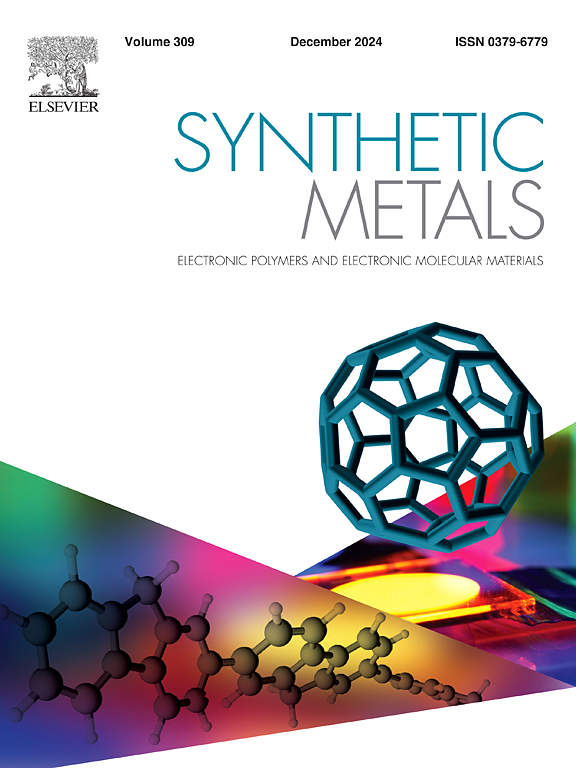Biosafety Cu/CaCu3Ti4O12 metacomposites for broadband weakly epsilon-negative response
IF 4.6
3区 材料科学
Q2 MATERIALS SCIENCE, MULTIDISCIPLINARY
引用次数: 0
Abstract
Weakly epsilon-negative (ε' < 0, EN) response media are the key to new single-molecule detection technologies and show promising application prospects in disease diagnosis, microwave-powered cancer treatment, in vivo detection, imaging, cell tracking and monitoring of disease occurrence mechanisms. The regulation of weakly EN responses is related to the detection accuracy of biomedicine. Therefore, based on the percolation theory, we created a set of Cu/CaCu3Ti4O12 (Cu/CCTO) metacomposites. The irregular dendrite Cu particles were used as the building blocks for constructing 3-dimensional conductive networks in CCTO matrix. Electrical percolation occurs when the Cu content is between 30 wt% and 40 wt%, which marks two dielectric response mechanisms: electric dipole resonance and plasmonic oscillation. The epsilon-negative response (ε' < 0, EN) band of the former excitation is relatively narrow, but with the increase of Cu content, the resonance intensity increases, and the accompanying epsilon-near-zero (-1 < ε' < 1) moves to low frequency. Above the percolation threshold, once the effective electron concentration required for plasmonic oscillation is achieved, we successfully obtain a EN response for the entire test band and achieve a weakly negative permittivity (-100 < ε' < 0) across 450 MHz-1 GHz region. The inductance characteristic and EM shielding effect of EN response are elucidated by equivalent circuit model and EM simulation technique. Finally, we evaluated the biocompatibility of Cu/CCTO metacomposites for cell growth and human tissue, which provided a research basis for the practical application of binary percolative metacomposites.
生物安全Cu/ ccu3ti4o12复合材料的宽带弱负响应
弱epsilon-negative (ε' < 0, EN)响应介质是新型单分子检测技术的关键,在疾病诊断、微波驱动癌症治疗、体内检测、成像、细胞跟踪和疾病发生机制监测等方面具有广阔的应用前景。弱EN反应的调控关系到生物医学检测的准确性。因此,基于渗流理论,我们创建了一套Cu/ ccu3ti4o12 (Cu/CCTO)复合材料。在CCTO基体中,以不规则枝晶Cu粒子作为构建三维导电网络的基本单元。当Cu含量在30 wt% ~ 40 wt%之间时,发生电渗流,这标志着电偶极子共振和等离子振荡两种介电响应机制。前者激发的ε′<; 0, EN的负响应带相对较窄,但随着Cu含量的增加,共振强度增大,伴随的ε′<; 1向低频移动。在渗透阈值以上,一旦达到等离子体振荡所需的有效电子浓度,我们成功地获得了整个测试波段的EN响应,并在450 MHz-1 GHz区域实现了弱负介电常数(-100 < ε' < 0)。利用等效电路模型和电磁仿真技术分析了电磁响应的电感特性和电磁屏蔽效应。最后,我们评价了Cu/CCTO复合材料对细胞生长和人体组织的生物相容性,为二元渗滤复合材料的实际应用提供了研究基础。
本文章由计算机程序翻译,如有差异,请以英文原文为准。
求助全文
约1分钟内获得全文
求助全文
来源期刊

Synthetic Metals
工程技术-材料科学:综合
CiteScore
8.30
自引率
4.50%
发文量
189
审稿时长
33 days
期刊介绍:
This journal is an international medium for the rapid publication of original research papers, short communications and subject reviews dealing with research on and applications of electronic polymers and electronic molecular materials including novel carbon architectures. These functional materials have the properties of metals, semiconductors or magnets and are distinguishable from elemental and alloy/binary metals, semiconductors and magnets.
 求助内容:
求助内容: 应助结果提醒方式:
应助结果提醒方式:


